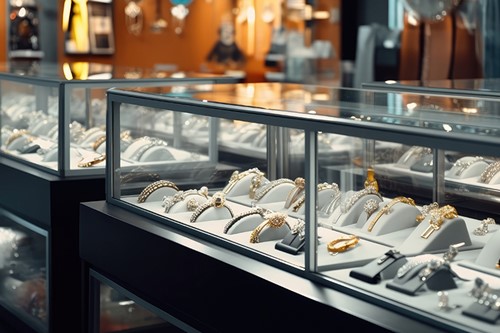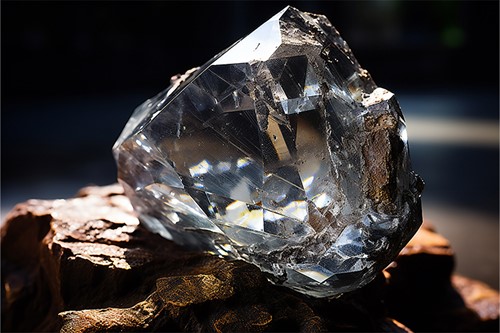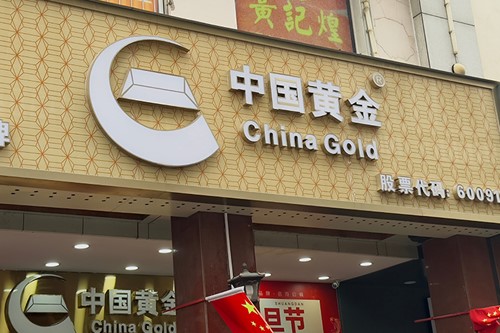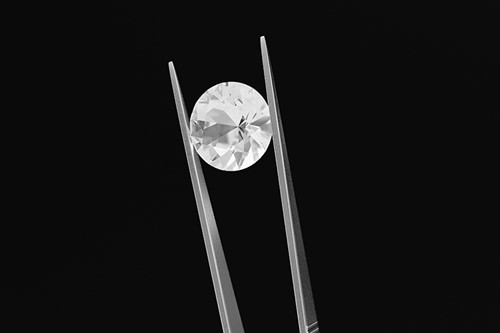We all know that diamonds are a girl's best friend, but right now they seem to be going through a rough patch. The diamond market has recently experienced a significant downturn with rough or uncut diamond prices dropping as much as 35% over the past year and wholesale polished diamonds dipping about 20%. This has been a somewhat surprising development for the diamond sector which had been buoyed by the global pandemic, as homebound shoppers turned to luxury purchases such as diamond jewelry to bring some joy into their quarantined lives. But this demand fell sharply as economies opened back up and normal life resumed, and dealers were left with overstocks bought at elevated prices.

In the face of these, and other, challenges, the diamond industry is going to have to prepare itself for a potentially tumultuous year. This blog will explore the different factors that are likely to shape the diamond market in 2024, and delve into what retail jewelers, diamond dealers, suppliers, and manufacturers can potentially expect.
Current Market Challenges And What They Will Bring for 2024
Lab-Grown Diamonds
Lab-grown diamonds are gaining increasing popularity, particularly for engagement rings as they are generally more affordable than their natural counterparts. Younger generations, in particular, are showing a shift in preferences as they believe these diamonds to be more environmentally friendly and ethically sourced. This trend is likely to be short-lived, however.
Martin Rapaport, chairman of The Rapaport Group, notes that synthetic diamonds now represent a significant percentage of diamond sales for major jewelers. Current price differentials are favorable for synthetics, providing higher profit margins for jewelers and cost savings for consumers - while five years ago, synthetic diamonds cost 20% less than their natural counterparts, they now sell for about 80% less.

Rapaport, however, raises concerns about the impact this pricing differential will have on both consumers and retailers. Retailers are setting high prices for lab-grown diamonds by comparing them to the prices of natural diamonds, potentially misleading consumers into thinking they are getting a good deal. However, the price of synthetic diamonds is crashing - Rapaport emphasizes that they can trade as much as 98% below the Rapaport Price List for natural diamonds and he predicts this decline will continue to the extent of reaching hundreds or even tens of dollars per carat.
Rapaport warns that while jewelers have been making good margins off them in the short term, synthetic prices will soon be so cheap that the net revenue, even at higher profit margins, will be insufficient for a jeweler’s survival. He also cautions consumers, emphasizing that synthetic diamonds are not comparable to natural diamonds in terms of rarity and value retention, and they do not hold the same long-term value.
The strain synthetic diamonds are putting on the engagement ring market currently is likely, therefore, to be short-lived. Instead, Rapaport anticipates a shift in the market, with lab-grown diamonds moving from bridal to fashion jewelry, particularly if De Beers and the industry as a whole invest in marketing and emphasize the unique qualities of natural diamonds. He emphasizes the importance of selling diamonds based on their specialness rather than relying solely on price, suggesting that this approach will help real diamonds maintain their value and exclusivity in the long term.

Economic Conditions
There has been a notable decline in the diamond market, with the RapNet Diamond Index for 1-carat polished diamonds falling by 20% in 2023. Rapaport attributes this to a combination of geopolitical tensions, economic weaknesses, and the growing prevalence of lab-grown diamonds. He points to the significant impact of global economic warfare, foreseeing intensified sanctions not only against Russia but also potentially involving China and the US. This changing geopolitical landscape is forcing a fundamental restructuring of the diamond market.
In addition, Rapaport asserts that economic uncertainties are affecting consumer spending, further complicating the industry's outlook. Macroeconomic conditions are one of the biggest contributors to the drop in diamond sales as businesses and consumers are becoming increasingly cautious in response to higher interest and inflation levels. The US, the diamond industry's most important market, is facing a potential recession, dampening demand for these precious stones.
A similar dynamic is playing out in China which has not recovered as quickly from its zero COVID policy as anticipated, and enthusiasm there for luxury gems has also been subdued. The Chinese consumer market, typically a powerhouse for high-end products, is exhibiting restrained demand for diamonds as economic uncertainties persist.

With both of these economic powerhouses feeling the pinch of an economic downturn, the balance of supply and demand in the diamond industry is likely to be further disrupted heading into 2024. The diamond industry, highly sensitive to fluctuations in consumer sentiment and economic stability should prepare itself for more cautious consumers who will spend less on luxury items like diamonds.
Russian Sanctions
As Russia is responsible for 35% of the world's rough diamond exports, there was a significant impact on the market when the United States (as the largest consumer of finished diamonds) banned the import of Russian rough diamonds due to the conflict in Ukraine. Other nations followed the lead of the US and also imposed sanctions, targeting Russian banks and Alrosa, the state diamond company that accounts for 90% of Russia's diamond production.
The threat of potential bans from the EU and G7 on Russian diamond imports will only serve to intensify the notable reduction in Russian diamond exports. To make matters worse, there may be restrictions on stones cut and polished in other countries, such as India, which currently handles 80% of the world's cutting and polishing. As a result of the sanctions, a shortage of non-Russian diamonds could lead to gradual price increases across the board.
Diamond Supply Chain
Diamonds can change hands 20 to 30 times between being mined and reaching the market, making it difficult to know exactly where they originated. While this may not have mattered as much in the past, primarily due to the sanctions on Russian diamonds it is now critical to know where each diamond has come from. In order to do this effectively, the industry is turning to technology for solutions.
Blockchain technology, known for its transparent and immutable ledger, is growing in importance as a tool that can track every step of the intricate journey from a diamond’s origin to the end consumer. The decentralized and secure nature of blockchain ensures that each stage in the diamond supply chain is recorded in a tamper-proof manner. De Beers, for example, has integrated a blockchain platform into their Code of Origin inscriptions by including a QR code tag which, when scanned, opens a multimedia information pack verifying that the diamond is natural rather than lab-grown as well as identifying its country of origin. Because it uses blockchain technology, it’s impossible to alter or tamper with the data.

Verifying the provenance of diamonds as well as authenticating them as lab-grown or natural will be a growing priority for consumers who are becoming more environmentally and ethically conscious. 2024 will likely bring an increase in the use of technology to facilitate this.
Waning Demand in China
I Do, a well-known Chinese diamond ring brand, filed for bankruptcy in January 2022, foreshadowing broader industry trends in China. Darry Ring (DR), another popular diamond ring brand in China, experienced a staggering 90% decrease in net profit. It came as little surprise that 2022 saw an 18% drop in the Chinese diamond market size, with this significant financial decline underscoring the economic challenges confronting diamond sellers in China.
Similar to the US, economic uncertainties in China, including concerns about job security, inflation, and the overall economic climate, have led many consumers to reconsider discretionary spending on luxury items like diamonds, and the Central Bank of China reported that over 60% of people prioritize boosting their savings rather than spending.

IB Photography - stock.adobe.com
The perception that diamonds are highly volatile in price and retain little value is also deterring Chinese consumers from viewing them as reliable long-term investments. This is in contrast to gold, which is perceived as a more stable and easily tradable asset and is becoming a more popular investment in China. In fact, China's gold consumption rose 7.32 percent year-on-year to 835.07 metric tons during the first three quarters of 2023. This preference aligns with the broader economic trend among Chinese consumers of prioritizing financial security in uncertain times.
A significant reduction in demand from China could challenge price increases seen from supply shortages due to Russian sanctions, putting downward pressure on diamond prices globally. The impact these two contradictory forces ultimately have on the price of diamonds will depend on how increased sanctions on Russia play out and whether China starts to regain its appetite for diamonds. If the decrease in demand in China is significant, it could potentially offset the impact of reduced supply from Russia, leading to more stable or even decreased diamond prices.
The Diamond Industry Needs to Be on Top of Its Game for 2024
The diamond industry may experience significant challenges moving into 2024, particularly as the market is likely to remain unpredictable for some time. Conflicting pressures from the lab-grown diamond market, macroeconomic instability, and Russian sanctions are likely to result in fluctuations in price. People in the industry would be wise to watch the market carefully and not expect it to be business as usual in 2024.
The best defense retailers can have against market uncertainty is to secure existing sales opportunities by making sure they always have the diamond their client is looking for, and to buy it at the most competitive price. RapNet, a Rapaport Group Company, is the world’s largest and most trusted diamond and jewelry trading network, and your partner in remaining profitable despite tougher times - with over 1.7 million diamonds in our marketplace you will always have the right stock available at the best price. You only deal with verified traders so there's less risk. Visit us for more information or to choose a membership plan.

Interested in learning more about best practices and updates in the diamond industry? Sign up to our newsletter today.


 RapNet Blog
RapNet Blog
![Diamonds 6[1][1]](/media/2120/diamonds-6-1-1.png)